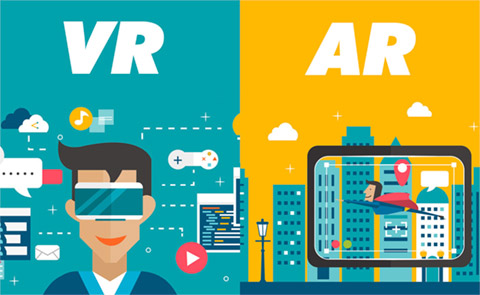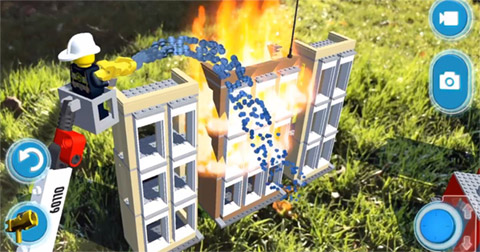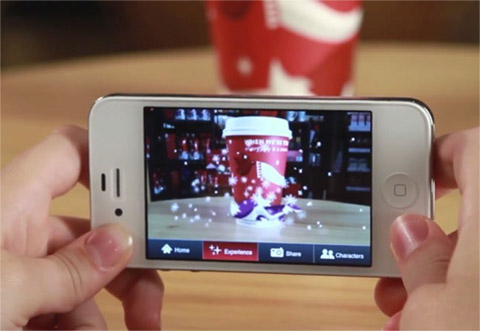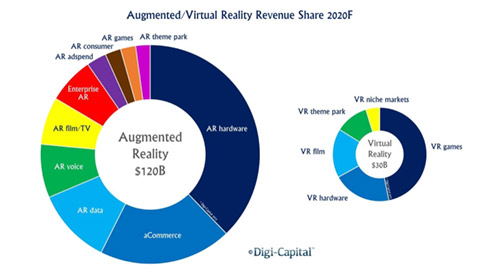Modern technologies are ubiquitous in everyday life and can increase the experiences we all live or hope to encounter. Augmented and Virtual Reality tend to do just this. These common terms are similar but have considerable differences as well.
What are Virtual Reality and Augmented Reality?
For starters, augmented reality (AR) blends both the digital and real world, generally by using a smartphone so the user is not completely immersed in the virtual world. For example, one of the most well-known mobile applications to embrace AR technology is Snapchat and their multitude of facial recognition filters or a dancing hotdog. Another hugely popular AR example that quickly became a global phenomenon is Pokémon Go.
Virtual reality (VR), on the other hand, immerses the user in a totally virtual world where experiences of every kind are possible, such as getting attacked by a shark or being on a rollercoaster. This experience is due to the usage of headsets or goggles. Virtual Reality is mostly used by gaming companies such as Nintendo or Sony, but movies, lifestyle brands and universities are integrating VR technology into their marketing plans.

Why are they popular?
Every new technology finds a place in a market when they offer something never seen before and that’s why these new features are appealing to people. Indeed they follow the needs of people who want more and more advanced concepts to try. There was a time T.V was in black and white - people wanted color and they got it, then people wanted HD. Now they want to escape the reality and get immerged in a totally different environment where they can do impossible things and be anyone they want. In addition to the fun aspect, VR and AR are changing a lot of markets including business, social media and healthcare.
A new marketing instrument
These technologies can be expensive to implement but it’s a major competitive advantage if you use it. VR marketing is particularly made for the Millenials and generation Z. It’s the best way to immerse the customer into the service or product to create the desire to buy because you can put them in every situation you want and adapt it following the customer. It’s just the beginning of this marketing approach and VR is not widespread to create VR advertising campaigns so companies are mostly in a waiting position, but we can guess that in the near future it will be a must. AR is used way more and especially in ecommerce. Companies can send information in real time and trigger engagements to buy goods like furniture or cars thanks to a hands-on experience and virtual 3D model like Ikea started in 2013.
Some examples of companies using AR:
Ikea
Ikea was one of the first companies to use a customer-minded AR application. This app is available and was one of the first to use ARKit tech from Apple. Thanks to this customers could see how the product would look in their house and didn’t have to go to the IKEA and spend hours in it. At the end it increased IKEA's online sales.
.jpg)
Lego
Lego also uses the ARKit tech to give kids the opportunity to build some Lego construction online. It’s a marketing strategy to create desire and bring them to stores where their parents will buy them these toys.

Starbucks
The famous coffee brand used AR since 2011 on their app for consumer holidays such as Christmas or Valentine’s Day. You could scan your cup of coffee and then heart or snow would pop from the cup following the events. The goal is to create unique moments for the customer and reinforce their love for the brand.

How it’ll evolve?
Animating yourself in a creative way seems to be the trend of the moment, and Apple just launched their new animated emojis in this way. 360˚ videos and images are starting to gain importance and are used by travel agencies, retailers and estate agents to name a few. But there are still problems to overcome with this marketing method because of the technology itself. To use VR you need headsets to make it work and they are not available for the vast majority of customers. Augmented reality has the biggest capacity in the marketing area. Mobile phones are owned by almost everyone; in the United Kingdom there is more than 80 million mobile phones which is a really good sign for AR marketing campaigns because it can reach almost everyone in the population and particularly youngest generation who are most receptive to these technologies.
